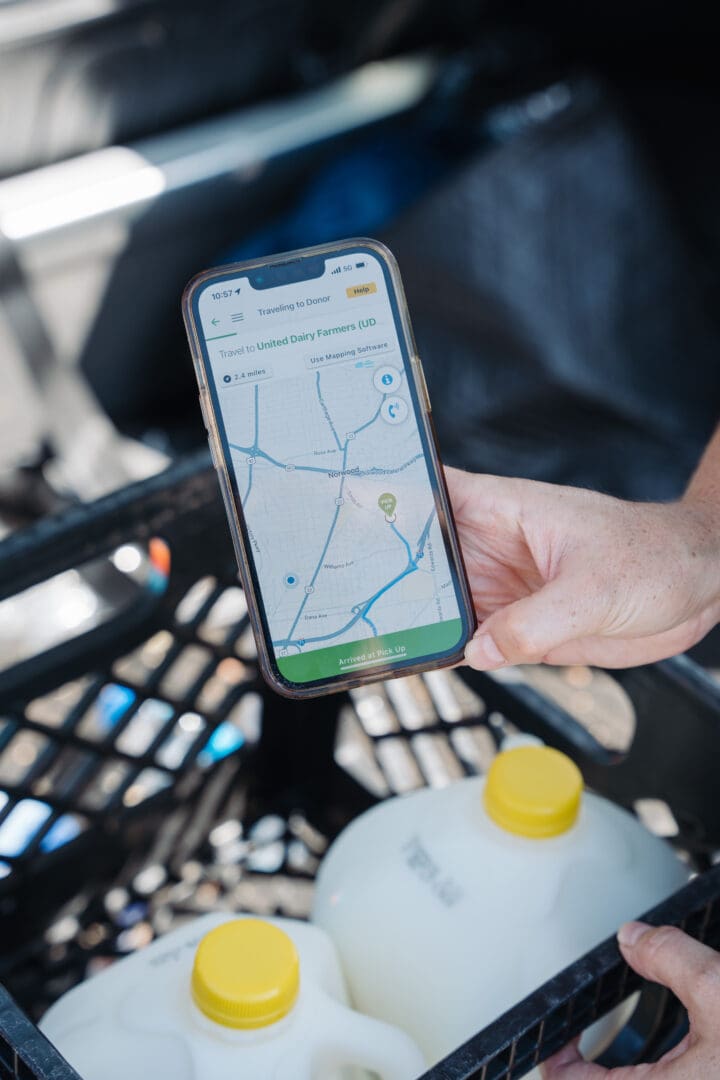Earth Day Reflections: The Environmental Cost of Food Waste

You’ve probably heard us say, “We prevented ___ pounds of CO₂ at the landfill this month.” What does this actually mean?
In honor of Earth Day, we’re taking a closer look at why food waste is so harmful to the environment and how food rescue makes a real difference. From accelerating climate change to straining natural resources, wasted food has a ripple effect that goes far beyond the kitchen.
The Hidden Cost of Wasted Food
Every time food is wasted, so are the resources that went into producing it including water, land, energy, fertilizers, fuel, and labor. In the U.S., nearly 30–40% of all food goes uneaten every year. That adds up to tens of millions of tons of wasted food and a whole lot of wasted resources.
According to the EPA, U.S. food waste each year is responsible for:
- 140 million acres of farmland growing food that’s never eaten (nearly the size of California and New York combined)
- 5.9 trillion gallons of water used to cultivate livestock and vegetation that’s never consumed (equal to what 50 million homes use annually)
- 665 billion kilowatt-hours of energy used to grow and process food that is thrown away. (enough to power another 50 million homes)

Read more about the impact of food waste at ReFed.com
These stats show just how intertwined food waste is with environmental degradation, including water pollution, land exhaustion, and greenhouse gas buildup. But the impact doesn’t stop there.
Landfills and Methane Emission
When food is sent to a landfill, the story gets even more troubling. Landfills might seem like benign storage places, but in reality they are active sites of decomposition that generate greenhouse gases.
Food scraps and other organic materials (like paper and yard trimmings) decompose in the anaerobic conditions (without oxygen) of a landfill. This process produces methane, a greenhouse gas that is extremely potent in its ability to trap heat in the atmosphere.
Did you know? Methane is about 25 times worse for the atmosphere than carbon dioxide over a 100-year period, and over 80 times more harmful in the short term.
In other words, a head of lettuce or a loaf of bread decomposing in a landfill creates methane that contributes significantly to climate change.
The Best Solution: Food Rescue

Unfortunately, excess food is hard to eliminate entirely from our food system. Even when restaurants, grocery stores, and cafeterias do their best to avoid over-ordering, there will always be surplus, especially in large-scale operations. That’s where Food Rescue comes in.
Last Mile Food Rescue saves perfectly good, surplus food from grocery stores, wholesalers, and restaurants, and delivers it directly to nonprofits that feed our neighbors in need. It’s one of the most effective ways to reduce food waste and its environmental footprint.
Every pound we rescue means:
- Fewer methane emissions
- Less strain on land and water
- More meals for our community
In just the past year, we helped prevent 12,581,406 pounds of carbon emissions from entering the atmosphere.
How You Can Take Action
- Volunteer with Last Mile and make a real, local impact
- Reduce waste by planning meals, storing food properly, and using leftovers creatively
- Fund the Mission by donating to our work
Food waste is a massive problem, but it’s one we can all do something about. From farms to grocery stores to our own kitchens, simple changes can make a big impact. In fact, the EPA says cutting U.S. food waste in half by 2030 would ease pressure on land and water and prevent tens of millions of tons of emissions.
This Earth Day, take action that matters. Keep good food out of landfills. Help the planet. Feed your neighbors. Download the Last Mile Food Rescue app or donate today and be a part of the solution.
